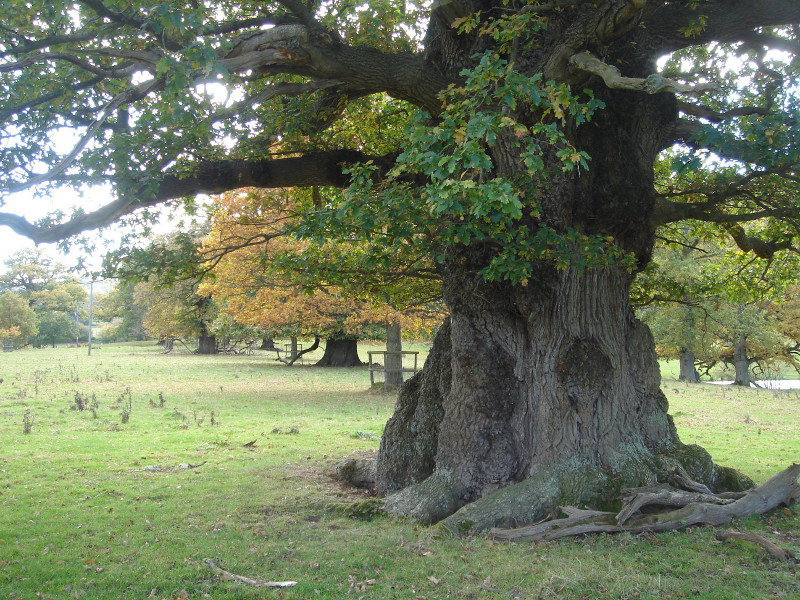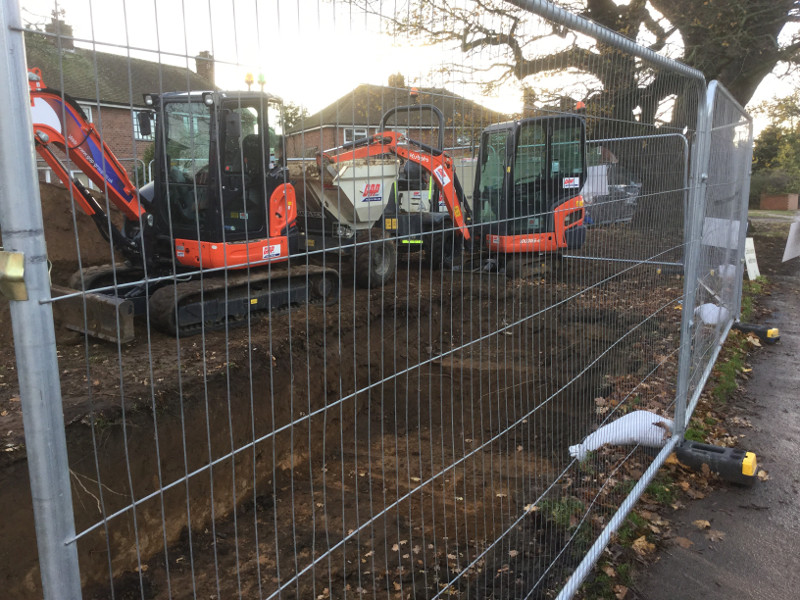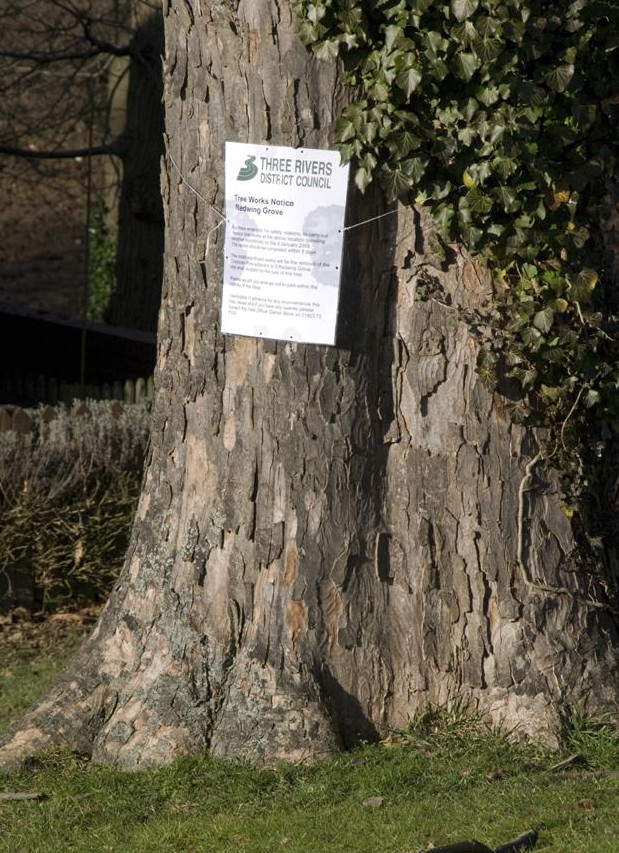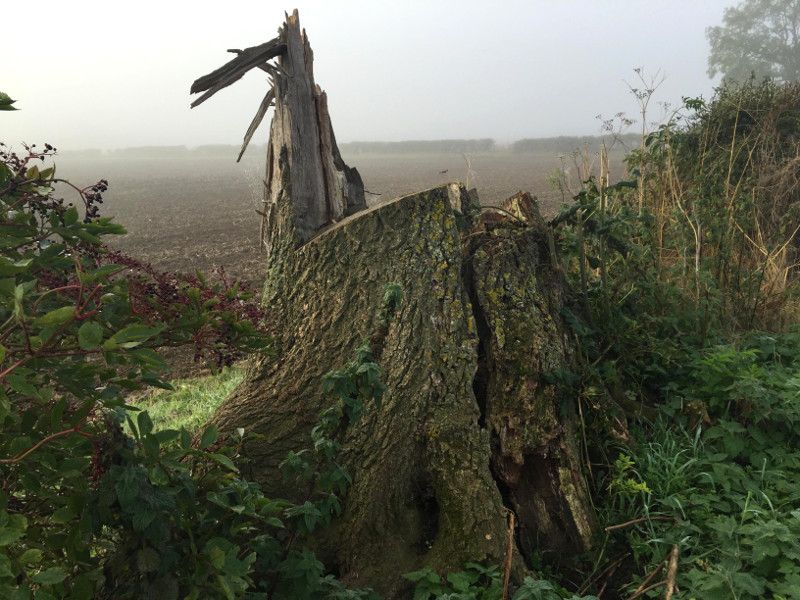What protection do ancient trees have?
Today, the majority of important trees are unprotected.
The UK’s ancient trees have no automatic right of protection. There is no equivalent to Scheduled Ancient Monument status, which important archaeological sites have. They often remain completely unprotected from destruction.
- They can be permanently damaged and even lost to a culture of safety and ‘tidiness’.
- They can be removed when land uses change, for example to development or agriculture.
- They have to compete with surrounding trees against overcrowding and gradual, creeping damage.
There are a series of ancient tree guides which have more information about the protection of ancient trees; trees and farming, trees and events and trees and development. There is also further guidance about trees and climate change and the future of ancient trees.

The majority of ancient trees in the UK are not protected. (Photo: Ted Green/WTML)

Ancient trees need special protection. (Photo: Ted Green/WTML)
Tree Preservation Orders
A local planning authority would usually make a Tree Preservation Order (TPO) to protect specific trees or woodland from deliberate damage or destruction.
Pros
- Can be initiated within hours of a tree being identified as in immediate danger, provided it is worthy of protection and the local authority can move quickly enough.
- Can be placed on any tree (including hedgerow trees), but not hedgerows themselves.
- Requires written permission from the council before any work can be done that might affect it in any way. Without this permission, the person concerned (including the landowner) may be prosecuted.
Cons
- Making a TPO is a ‘discretionary power’, which means there is no legal reason why a council has to make an order, but once one has been made, they have a duty to enforce it.
- A TPO is often placed on a tree reactively, rather than proactively.
- TPOs do not recognise the amenity value of ancient trees for their age – ‘amenity’ is typically about visibility
- Applications can be made to remove a tree, even with a TPO, for a variety of different reasons.
- Trees on land controlled by local authorities, or the Crown are not normally granted TPOs.
- Works on dying, dead, dangerous and nuisance trees are excluded.
- Works approved by the Forestry Commission under a felling licence are also allowed.
- Acts of Parliament and planning permission usually override an existing TPO.
Site designations
The site on which an ancient tree resides may have legal protection of its own.
Statutory designations include
- Site of Special Scientific Interest (also known as an SSSI or ASSI in Northern Ireland)
- National Nature Reserve (NNRs)
- Special Area of Conservation (SAC) – a European designation
- Special Area of Protection - a European designation specifically designed to protect birds

This ancient oak is within Moccas Park, a Site of Special Scientific Interest. (Photo: Katherine Jaiteh/WTML)

Another tree within a SSSI is the Major Oak, in Sherwood Forest. (Photo: Phil Lockwood/WTML)
Planning restrictions
Certain planning restrictions may be used to help protect ancient trees.
Pros
- Trees in relation to construction are covered by a British Standard BS 5837 and tree work is covered by BS 3998. Proposed development must meet the requirements of these two standards.
Cons
- Objections must be lodged early in the process.
- Once it has been granted, planning permission overrides other objections and even Tree Preservation Orders.
Is an ancient tree near you under threat?
Have you found a possible threat from development to an ancient wood or tree? Let the Woodland Trust know.

The Grantham Oak under threat from damage to roots. (Photo: Jack Taylor)

If you see an ancient tree under threat let the Woodland Trust know. (Photo: Sally-Ann Smurthwaite)
Wildlife legislation
An ancient tree may have legal protection if it provides a home to another legally protected species.
For example, all bats species in the UK have protection under the Wildlife and Countryside Act (1981) and the Countryside and Rights of Way Act (2000)
These laws provide protection for all bats and their roosts, some birds, fungi, lichens and invertebrates.
Important hedgerows are also protected under the Hedgerow Regulations (1997). Removal of important hedges requires permission.
Felling licenses
In England, Scotland and Wales the Forestry Commission (FC) is responsible for the general control of felling. In Northern Ireland the Forest Service administers felling licence applications.
Pros
- To approve a felling licence that could lead to loss of ancient woodland is contrary to FC policy.
- FC are in position to place a fine for the illegal felling of a tree.
Cons
A felling licence is required for the felling of trees, however there are some exceptions:
- Trees with a diameter less than 8cm
- Cases where the quantity of timber to be felled is under 5 cubic metres
- Felling to prevent danger
- Felling as part of an approved planning application
- Trees standing in an orchard, garden, churchyard or public open space
- Felling by statutory service providers (e.g. electricity and water companies)

Tree with a felling notice. A felling licence is required, but there are some exceptions. (Photo: Nicholas Spurling/WTML)

A felled ash tree. (Photo: Richard Bloor/WTML)
